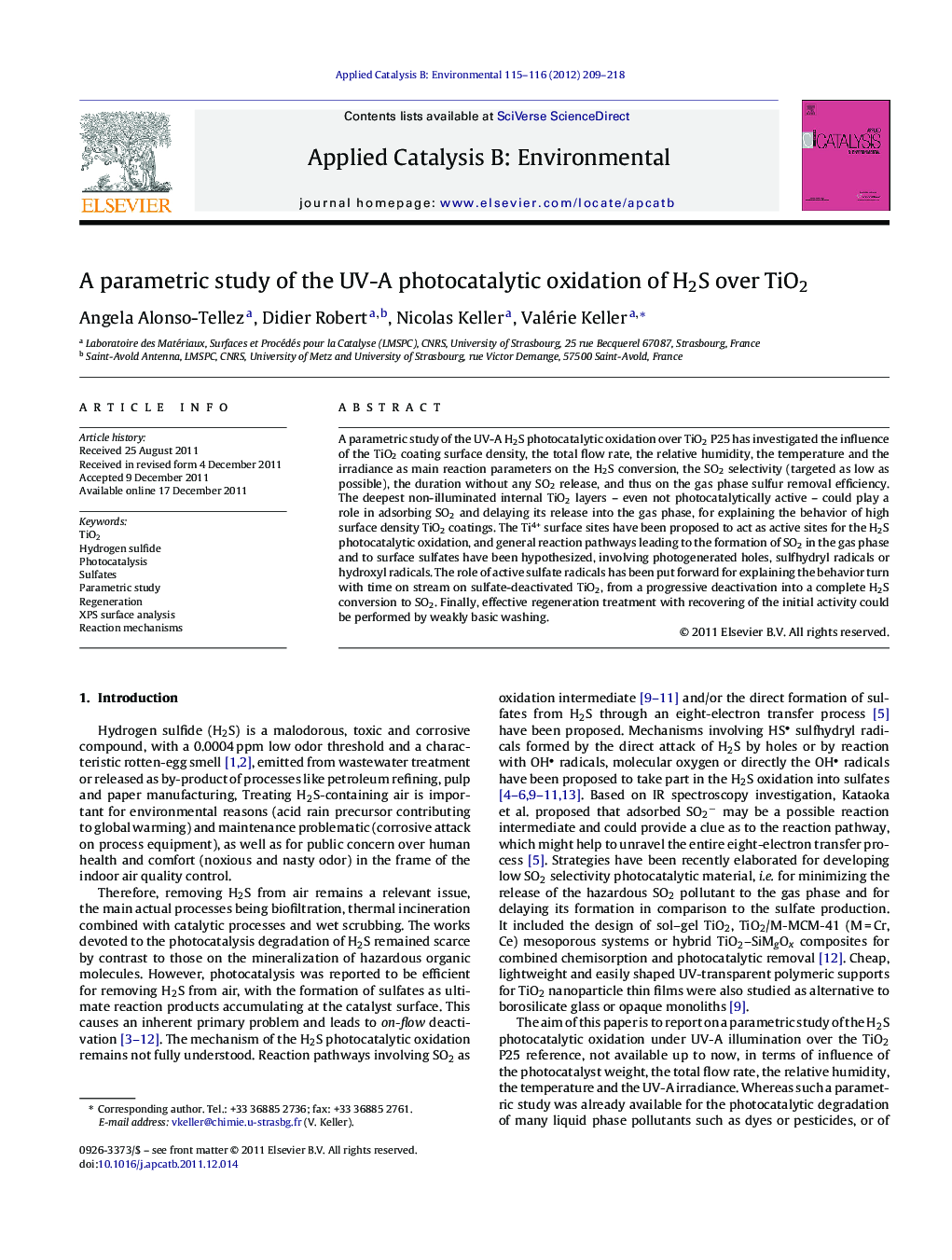| Article ID | Journal | Published Year | Pages | File Type |
|---|---|---|---|---|
| 46422 | Applied Catalysis B: Environmental | 2012 | 10 Pages |
A parametric study of the UV-A H2S photocatalytic oxidation over TiO2 P25 has investigated the influence of the TiO2 coating surface density, the total flow rate, the relative humidity, the temperature and the irradiance as main reaction parameters on the H2S conversion, the SO2 selectivity (targeted as low as possible), the duration without any SO2 release, and thus on the gas phase sulfur removal efficiency. The deepest non-illuminated internal TiO2 layers – even not photocatalytically active – could play a role in adsorbing SO2 and delaying its release into the gas phase, for explaining the behavior of high surface density TiO2 coatings. The Ti4+ surface sites have been proposed to act as active sites for the H2S photocatalytic oxidation, and general reaction pathways leading to the formation of SO2 in the gas phase and to surface sulfates have been hypothesized, involving photogenerated holes, sulfhydryl radicals or hydroxyl radicals. The role of active sulfate radicals has been put forward for explaining the behavior turn with time on stream on sulfate-deactivated TiO2, from a progressive deactivation into a complete H2S conversion to SO2. Finally, effective regeneration treatment with recovering of the initial activity could be performed by weakly basic washing.
Graphical abstractFigure optionsDownload full-size imageDownload as PowerPoint slideHighlights► A parametric study of the UV-A photocatalytic oxidation of H2S was performed over TiO2 P25. ► Reaction pathways and mechanisms were discussed. ► Ti4+ surface sites were proposed to act as active sites for H2S oxidation. ► Non-illuminated deepest TiO2 layers could play a role for enhancing sulfur removal efficiency. ► Weakly basic washing was efficient as regeneration treatment for removing surface sulfates and recovering the TiO2 activity.
